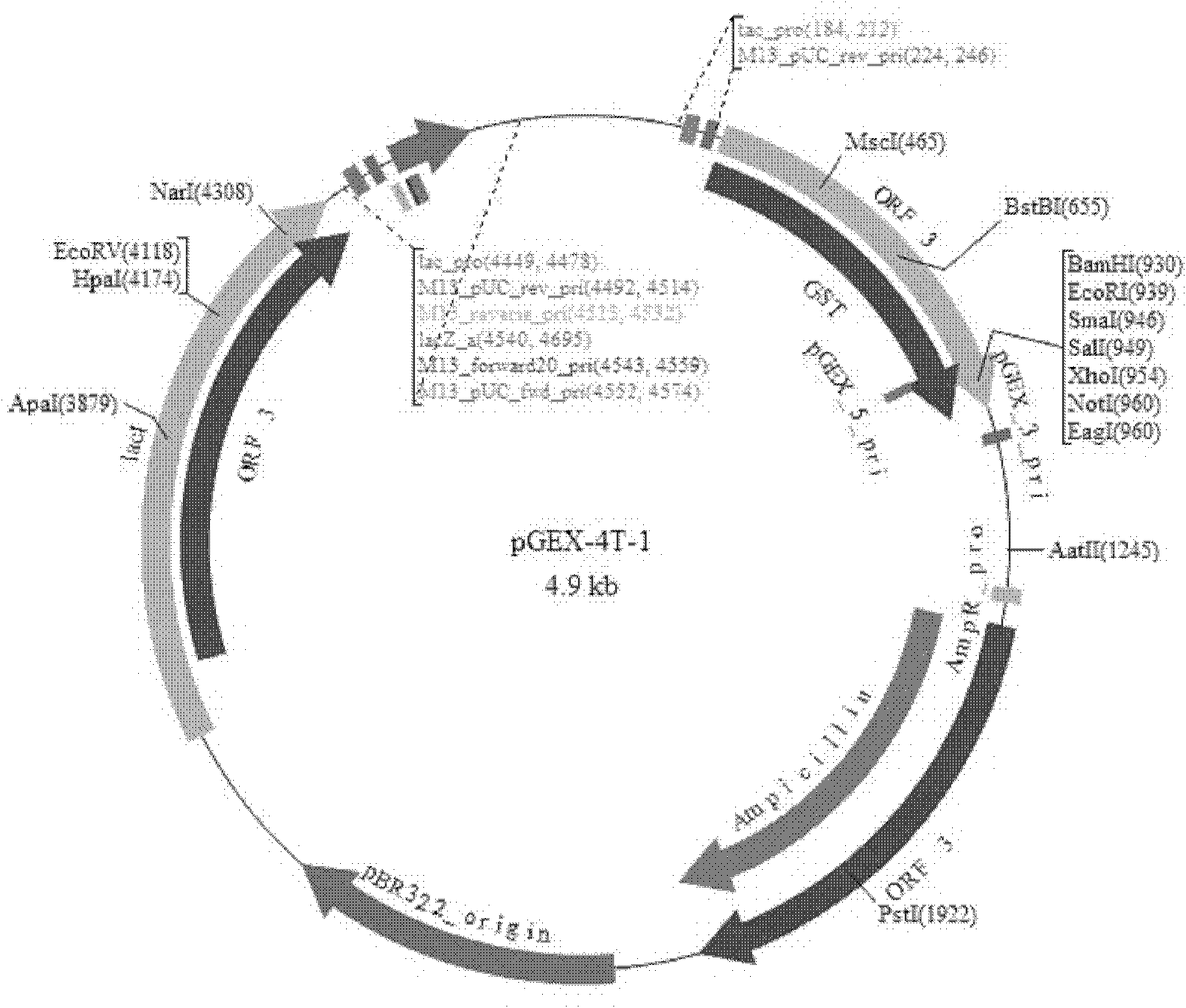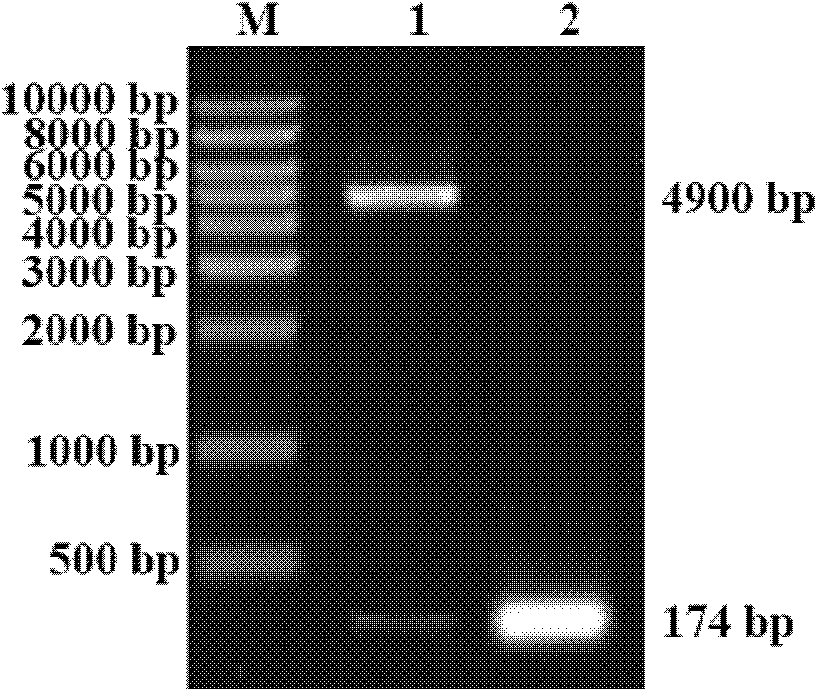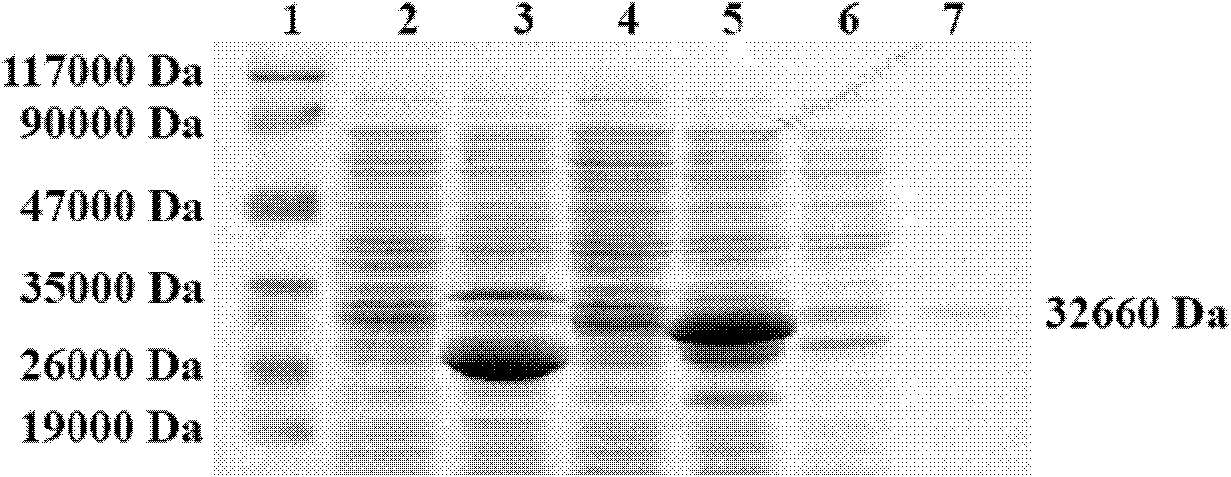Human MCHR1 epitope domain gene expression-associated protein MCHR1-C and encoding gene thereof
A technology of MCHR1-C and antigenic epitopes, which is applied in receptors/cell surface antigens/cell surface determinants, animal/human proteins, genetic engineering, etc., can solve problems such as difficult treatment and unclear pathogenesis
- Summary
- Abstract
- Description
- Claims
- Application Information
AI Technical Summary
Problems solved by technology
Method used
Image
Examples
Embodiment 1
[0044] Example 1: Case Collection
[0045] From January 1, 2008 to December 30, 2009, the serum of 100 patients with vitiligo who were not combined with other diseases and had not been treated with immunosuppressants in the past 3 months and had obvious progress in the dermatology clinic of Hangzhou Third People's Hospital were collected. Among them, there were 82 cases of common type (10 cases of generalized, 8 cases of localized, 16 cases of acral, 33 cases of sporadic, 15 cases of sporadic combined with acral), 18 cases of segmental type; 48 cases of male, There were 52 females, aged 16-67 years, with an average age of 32 years, and the course of disease ranged from 1 month to 20 years, with an average of 3.5 years. Serum samples from 30 normal people, including 16 males and 14 females, aged 18 to 47 years, with an average age of 31, were collected from healthy individuals. All collected cases were signed by patients with informed consent and approved by the Medical Committe...
Embodiment 2
[0046] Example 2: Synthesis of Human MCHR1 Epitope Region Gene MCHR1-C
[0047] According to the literature reports, human MCHR1 antigen epitope regions 51-80, 85-98, 154-158 and 254-260 were artificially synthesized according to the nucleotide sequence of the full-length human MCHR1 gene (Genbank accession number: NM005297.3), A BamH I restriction site was introduced at the 5' end of the gene, an Xho I restriction site and a stop codon sequence were introduced at the 3' end, and the size of the synthetic gene MCHR1-C was 183bp. This work was completed by Nanjing GenScript Biotechnology Co., Ltd. The measured sequence of the synthesized antigen epitope region gene is consistent with SEQ ID NO:2.
Embodiment 3
[0048] Example 3: Construction of human MCHR1 epitope region gene MCHR1-C expression vector
[0049] The amplified MCHR1-C fragment was purified, digested with BamHI / xhoI (purchased from Treasure Bioengineering (Dalian) Co., Ltd.) and connected to the prokaryotic expression vector pGEX-4T-2 (gifted by Professor Zhang Chuanxi, Institute of Insect Science, Zhejiang University ) BamH I / Xho I site, T4DNA ligase (purchased from Treasure Bioengineering (Dalian) Co., Ltd.) after connection, the recombinant plasmid was transformed into BL21 Escherichia coli competent cells, and the recombinant transformant was screened, and the screened recombinant plasmid was After pGEX-MCHR1-C was digested and identified by PCR, it was sent to Shanghai Sangong Company for sequencing. The measured sequence of the inserted antigenic epitope fragment is consistent with SEQ ID NO:2.
PUM
 Login to View More
Login to View More Abstract
Description
Claims
Application Information
 Login to View More
Login to View More - R&D
- Intellectual Property
- Life Sciences
- Materials
- Tech Scout
- Unparalleled Data Quality
- Higher Quality Content
- 60% Fewer Hallucinations
Browse by: Latest US Patents, China's latest patents, Technical Efficacy Thesaurus, Application Domain, Technology Topic, Popular Technical Reports.
© 2025 PatSnap. All rights reserved.Legal|Privacy policy|Modern Slavery Act Transparency Statement|Sitemap|About US| Contact US: help@patsnap.com



